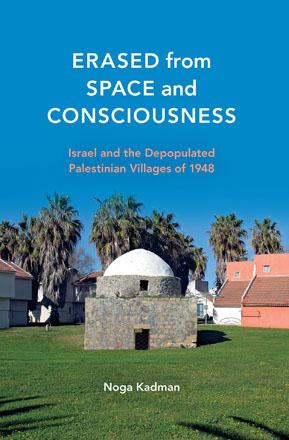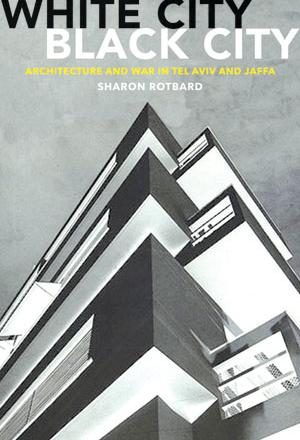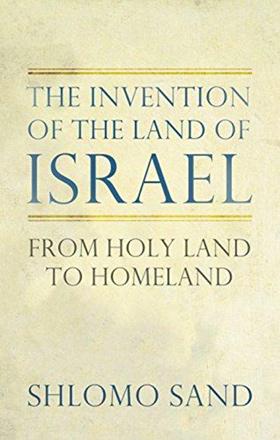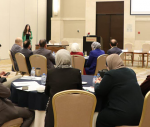You are here
Erasing the layers of the past
By Sally Bland - Nov 22,2015 - Last updated at Nov 22,2015

Erased from Space and Consciousness: Israel and the Depopulated Palestinian Villages of 1948
Noga Kadman
US: Indiana University Press, 2015
Pp. 256
Noga Kadman is a researcher in the field of human rights and the Israeli-Palestinian conflict. She is also a licensed tour guide in Israel, and co-editor of a Hebrew-Arabic guide to the depopulated Palestinian villages and towns. In “Erased from Space and Consciousness,” she examines how “Israel deals with the preceding layer of its existence, a layer that it has erased and on which it has been built.” (p. 2)
In her view, “the importance of examining the Israeli approach to the Palestinian villages depopulated in 1948 goes beyond the subject matter itself, since this approach can serve as an indicator of Israeli readiness to achieve a sustainable resolution of the conflict.” (p. 6)
The book was originally published in Hebrew, signalling the author’s intent to advocate for Israeli recognition of Palestinian loss as a step towards reconciliation.
Grounded in Walid Khalidi’s and Salman Abu Sitta’s documentation of 416 destroyed villages, Kadman did extensive archival and field research, visiting 230 of these villages, to see how the policies of state and other Zionist agencies have shaped Israeli public consciousness of the destroyed villages and, by extension, of the Palestinians.
The book begins with the 1948 war and its aftermath, focusing on the Zionist military campaign which demolished and depopulated the villages, created the refugee problem, and began the process of Judaisation — blocking the return of the Palestinians and settling Jewish immigrants in their place.
Countering this erasure, Kadman highlights what happened in specific villages, including the less-publicised massacres in Tantura, Dawayima, Saliha, Safsaf and other places. After the war, Judaisation evolved: “In the 1950s and 1960s the demolition’s emphasis shifted from military and utilitarian needs to those of landscape architecture and erasure of the ruins, which stood as constant reminders of the refugee problem that Israel strongly preferred to ignore.” (p. 27)
Kadman analyses Israel’s treatment of village remains as part of the drive to control the land on the one hand, and build an Israeli national identity on the other. While early settlers’ records reveal delight at the fruit orchards and olive groves left behind by their Palestinian owners, much of such cultivation was ploughed under to make way for modern forms of agriculture, enacting furthering erasure. This “created a new demographic map, closer to the original Zionist imagery of an ‘empty land’.” (p. 38)
The Jewish National Fund’s massive forestation programme also changed the landscape. The bulk of new plantings were non-native — “an implementation of its stated policy of endowing Israel with a European landscape”. (p. 42)
There was another aim as well: Kadman quotes a JNF official as saying: “a large portion of JNF parks are on lands where Palestinian villages used to stand, and the forests are intended to camouflage this.” (p. 43)
The new geography was reflected in the naming and mapping of sites, with the original Arabic names of depopulated villages often changed to Hebrew names, and many dropped from the maps. Zionist imperatives determined whether remaining structures were kept or destroyed. Generally, ruins associated with ancient Jewish sites, or the Crusaders, were preserved while centuries-old Palestinian buildings were demolished.
“Alongside the physical Judaisation, spatial socialisation is taking place, binding Israelis to the space in which they live, one that is structured and imparted to them as an almost exclusively Jewish space. This process includes, inter alia, the ignoring and marginalisation of the depopulated villages in Israel, which complement their erasure from the ground. Symbolic sidelining of the villages is carried out when their names are being erased or when they are marginally represented in maps.” (p. 51)”
A most interesting chapter in the book addresses Jewish views of the depopulated villages on which their kibbutzim or moshavim was established. While the new rural communities benefited from what the Palestinians left behind, “seldom do they articulate any feeling or guilt or moral dilemma in this regard”. (p. 57)
“References to the lives of the villagers prior to their departure are rare.” (p. 59)
In addition to the lingering trauma of Holocaust survivors and the hardships of settling anew, Kadman attributes their attitude to their “having internalised the hegemonic Israeli narrative, which lays the blame for the war and its results… on the Palestinians themselves”. (p. 89)
“Erased from Space and Consciousness” is a case study in how geography and demography interact, and how politics and ideology shape material reality, which in turn shapes public consciousness. It is also a sign of the growing movement among Israelis to come to terms with their past. One only wonders why Kadman presents the conflict as one between two national movements without specifying Zionist as a colonial movement, when the picture she presents of the Judaisation process matches a colonial project.
Related Articles
First published in Hebrew 10 years ago, “White City — Black City” is part of a rare, but growing body of literature wherein Israelis take a hard, honest look at the consequences of how their state was founded and developed.
The Invention of the Land of Israel: From Holy Land to HomelandShlomo SandLondon: Verso, 2014Pp.
AMMAN — The confirmation of the Arab Media Ministers Consultative Meeting of the Arab League, held in Tripoli on Saturday, to maintain Jerus


















